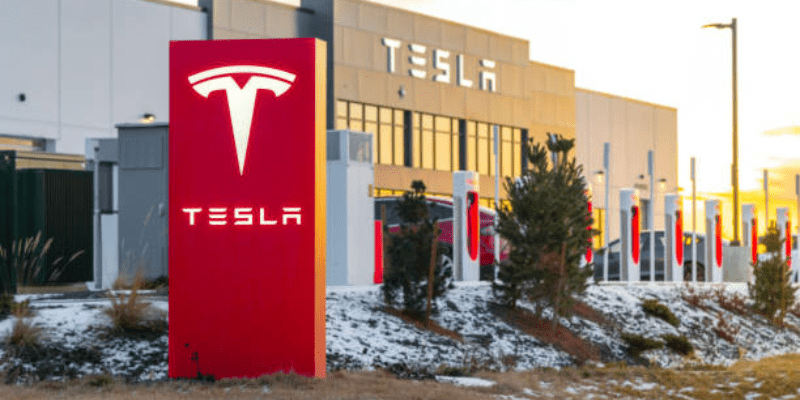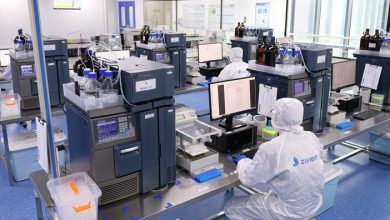Tesla Shares Rise 11%: Plans To Begin Producing New Affordable Cars

Tesla missed analyst projections when it revealed its first-quarter sales decrease of 9% on Tuesday, the largest since 2012. The electric vehicle maker is still dealing with the impact of continuous price reductions.
TakeAway Points:
- Tesla’s first-quarter sales decline of 9% was the company’s biggest year-over-year decline since 2012.
- Due to growing competition worldwide, Tesla’s stock price has dropped by more than 40% as of Tuesday’s close.
- Sales of all EVs are growing less quickly, and in an effort to increase demand, Tesla and its main competitors have been steadily lowering EV pricing for months.
Tesla Sales Decline
Following CEO Elon Musk’s announcement to investors that production of new, reasonably priced EV models would start earlier than anticipated, the stock shot up in an extended session.
Revenue fell from $25.17 billion in the fourth quarter to $23.33 billion a year earlier. From $2.51 billion, or 73 cents per share, a year earlier, to $1.13 billion, or 34 cents per share, net income fell by 55%.
The company’s previous revenue decline in 2020 was caused by production disruptions during the Covid-19 pandemic, but this time the decline was far more severe. In the first three months of 2024, Tesla’s automotive revenue fell 13% year over year to $17.38 billion.
After previously anticipating that manufacturing would begin in the second half of 2025, Musk stated on the call that the business aims to start manufacturing of new models in “early 2025, if not late this year.” Along with praising Tesla’s investments in AI infrastructure, Musk revealed that the business is in discussions to licence its driver assistance system—known in the US as the Full Self-Driving, or FSD, option—with “one large carmaker.”
Tesla’s quarterly revenues
Tesla reaffirmed its negative forecast for 2024 in its shareholder deck, warning investors that the “volume growth rate may be considerably lower than the growth rate achieved in 2023.”
Tesla’s stock had dropped more than 40% this year, to its lowest point since January 2023, because of worries about the company’s continuous price reduction, lacklustre deliveries, and competition in China. This was before the 11% increase after hours. Tesla said earlier this month that first-quarter vehicle deliveries were down 8.5% compared to the same period last year.
Tesla to Launch New Affordable Models
The company stated in the presentation deck that it will be releasing new models more quickly that “may be built on the same manufacturing lines” as Tesla’s present range of “new vehicles, including more economical variants.” Prior to investing in new production lines, Tesla wants to “completely utilise” its current production capacity and achieve “more than 50% growth over 2023 output.”
Tesla also displayed screens from a robotaxi-based ride-hailing business on the deck. For years, the firm has made promises about a self-driving car, but Musk has not seen through them.
The Quarterly Net Profits of Tesla
The growth in EV sales is slowing down, and in an effort to increase demand, Tesla and its main competitors have been lowering EV costs. Tesla’s first-quarter gross profits fell by 18%, mostly attributable to this year’s pricing reductions.
Following a discussion of the first quarter’s operational difficulties, which included delays to the Red Sea supply chain, Musk stated during the call that “we expect Q2 will be a lot better.”
According to Tesla, money from previous sales of its FSD option was included in total sales. The corporation was able to recognise the deferred revenue when Autopark, a feature, was released in North America.
According to Siena Capital’s automotive analyst, Chris Redl, Tesla may have recognised as much as $700 million in deferred revenue from FSD during the quarter. That amounts to about 4.3% of Tesla’s car revenue after regulatory credits are subtracted.
This month, Tesla started a significant reorganisation that included the resignation of two executives, Rohan Patel and Drew Baglino. In a message distributed to the whole company last week, Musk said that the automaker was laying off almost 10% of its global workers.
Spending on capital projects increased to $2.77 billion, up 34% from the previous year.
The corporation reported a $2.53 billion deficit for the quarter, and free cash flow became negative. In the fourth quarter of last year, Tesla reported free cash flow of $2.06 billion, up from $441 million the previous year. Tesla explained the low number by pointing to a $2.7 billion inventory build-up and $1 billion in capital expenditures for “AI infrastructure.”
The energy sector of Tesla saw a 7% increase in sales to $1.64 billion, while services and other income saw a 25% increase to $2.29 billion over the same period in 2011.
During the results call, Musk was questioned about his future plans for leaving Tesla in light of his several roles, which also include managing SpaceX, X (previously Twitter), and other companies.
Musk did not respond, but he did state that he works most of the time, seldom ever leaves the office on Sunday afternoons, and that he will do everything in his power to ensure that Tesla is “extremely prosperous.”
Martin Viecha, vice president of investor relations at Tesla, announced at the end of the call that, after seven years, he will be departing the firm in a few months. Musk gave him a compliment.





